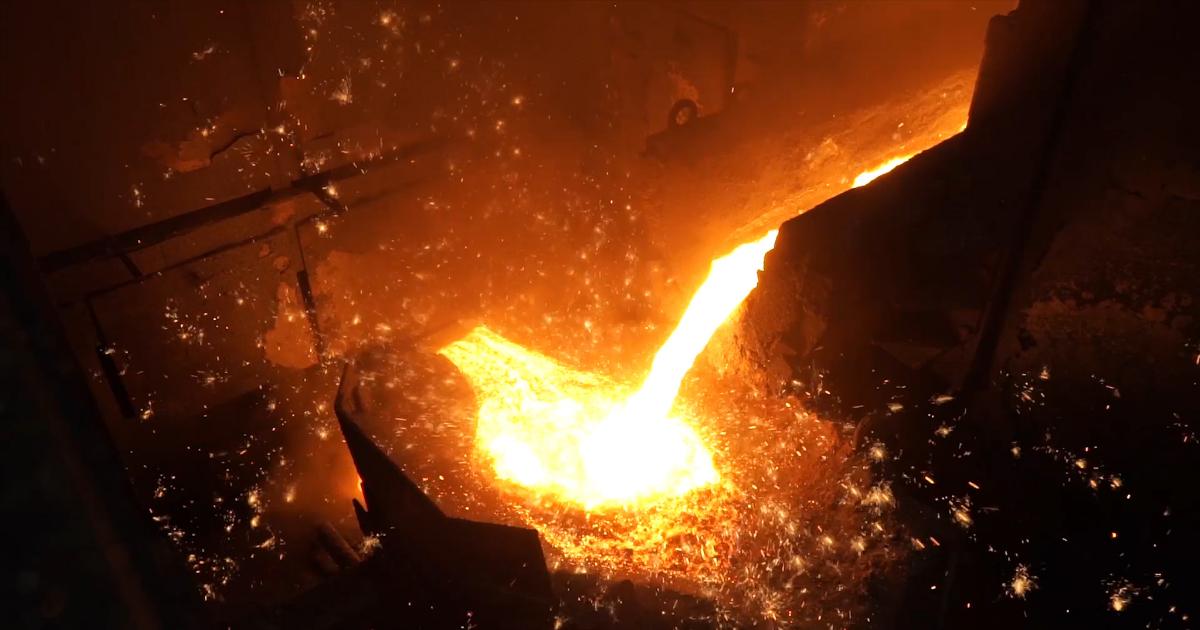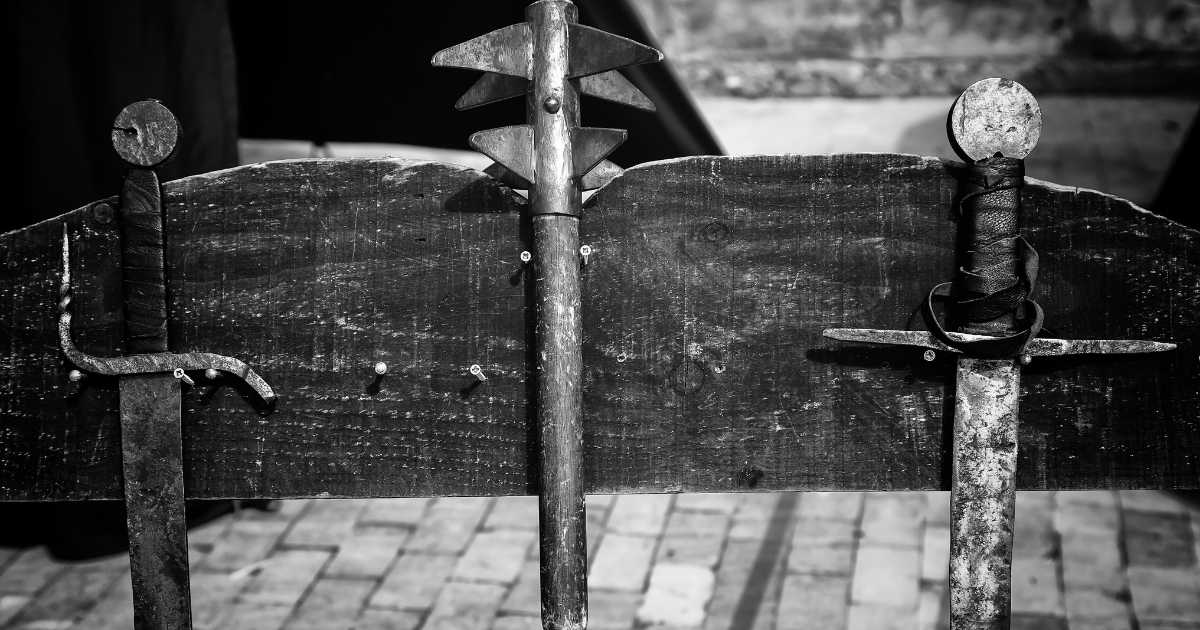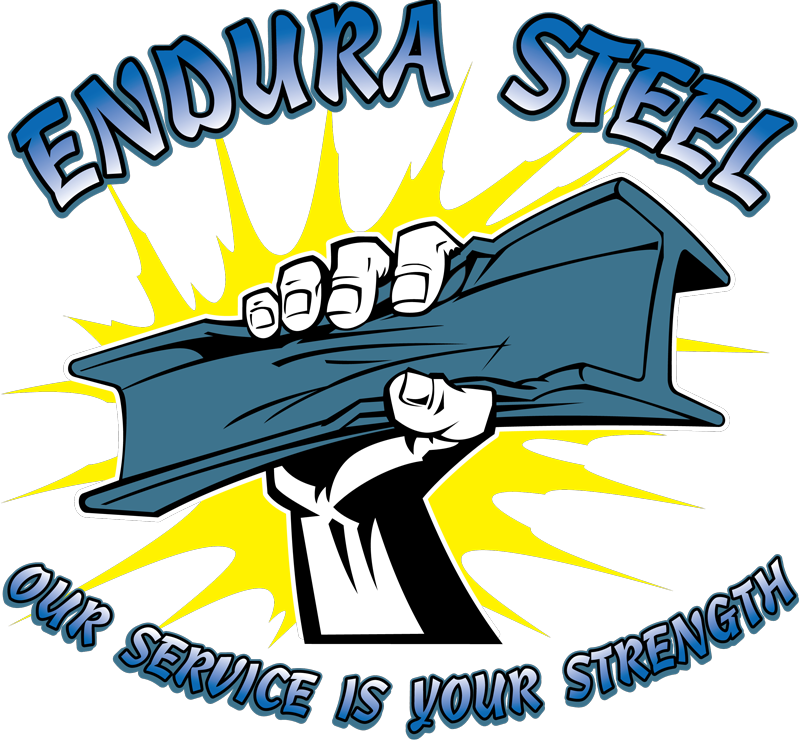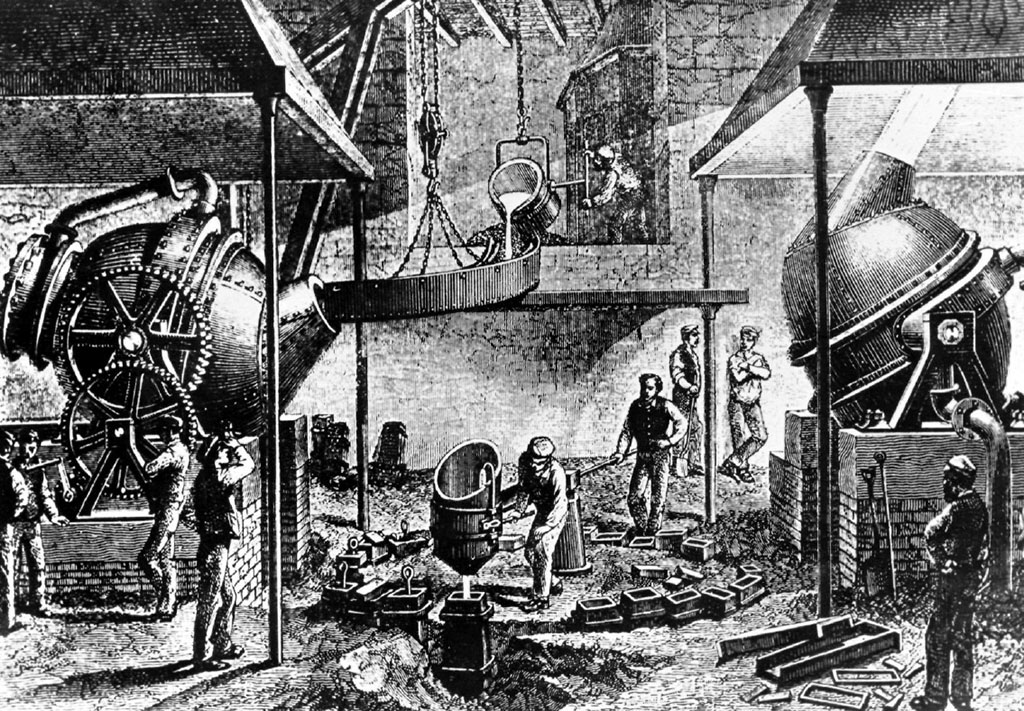Steel is an essential material that has shaped our modern world. It is used in various industries. Bridges, skyscrapers, and cars rely on steel’s strength and durability. Additionally, steel is vital in producing household items like appliances, cutlery, and furniture. Its corrosion resistance properties are also helpful in creating pipelines, storage tanks, and other infrastructure. Steel’s versatility and reliability make it an integral part of our daily lives. Steel has built the world we know today.
The Early Days: Steel Enters the Scene
Earliest Recorded Iron Artifacts (3000 BCE)
The earliest recorded iron artifacts date back to 3000 BCE. These artifacts were found in Mesopotamia and Egypt and were made from meteoric iron. Unlike other metals, iron is not found in a pure form in nature. However, ancient civilizations discovered that meteorites contained iron, which they used to create tools and weapons.
These artifacts were rare and held great significance in religious and cultural practices. It wasn’t until much later, around 1200 BCE, that humans learned to extract iron from ore through smelting. This development marked the beginning of the Iron Age and paved the way for the eventual creation of steel, which would influence human civilization.
Tutankhamun’s Meteoric Iron Dagger
Tutankhamun’s tomb held a remarkable discovery – a meteoric iron dagger. The dagger’s blade, hilt, and sheath were all crafted from iron from a meteorite.
This unique material held significant value in ancient Egyptian society, as it was believed to possess mystical and religious properties. The discovery of the dagger also indicates that ancient civilizations had advanced knowledge of metalworking techniques.
Scientists have analyzed the metal and confirmed that it came from a meteorite that crashed in the region that is now modern-day Egypt. This discovery offers a glimpse into the early uses of iron and how it was prized for its rarity and perceived value.
The First “Steel” – Wootz Steel from India

Crucible Technique
The production of Wootz Steel from India was accomplished through the crucible technique. This process involved melting iron with other materials, such as charcoal, glass, and plants, in a clay crucible.
The resulting material was then forged into blades. The technique was developed in ancient India and spread throughout the Middle East, where it was used to create the legendary Damascus steel. The exact composition of the steel was a closely guarded secret, but it is now believed to have been a type of high-carbon steel. The crucible technique was a significant advancement in steel production and marked the beginning of the steel industry.
The Legendary Damascus Blades
The legendary Damascus blades were known for their exceptional strength and sharpness. These blades were made using the crucible technique and were highly prized by warriors and rulers in the Middle East. According to legend, a Damascus blade could easily cut through a strand of hair or a piece of silk. The unique patterns on the edge, known as damascening, were created by combining different types of steel and etching the surface with acid.
The secret of the Damascus blades was lost in the 18th century, and modern attempts to recreate them have generally been unsuccessful. However, there have been some recent developments that might have solved the secret. Nevertheless, these blades remain a testament to the ingenuity of ancient metalworkers and the enduring legacy of steel.
The Iron Age: Steel Gets a Makeover

Birth of the Iron Age (1200 BCE)
The birth of the Iron Age occurred around 1200 BCE, marking a significant shift in human history. This period saw the widespread use of iron in tools and weapons, replacing bronze’s previous use. Iron was more abundant than bronze and had superior properties, making it ideal for various applications. Extracting iron from ore, known as smelting, became more efficient during this time, allowing for large-scale production. As a result, iron tools and weapons became more widespread, leading to significant advances in agriculture, construction, and warfare. The Iron Age laid the foundation for the eventual development of steel and set the stage for the modern era of metallurgy.
The Hittite Empire
Iron Weapon Advantage
The Hittite Empire had a significant advantage in warfare due to their use of iron weapons. Iron was more robust and durable than bronze, giving the Hittites an edge on the battlefield. They could produce large quantities of iron weapons and armor, which made their army formidable and allowed them to expand their territory. The Hittites were one of the first civilizations to master the production of iron, and other civilizations eventually adopted their techniques. The widespread use of iron weapons marked a turning point in human history and set the stage for the eventual development of steel. The Hittites demonstrated the potential of iron and paved the way for future advances in metallurgy.
The Mysterious Fall of the Hittites and Their Iron Secrets
The mysterious fall of the Hittite Empire led to the loss of their ironworking techniques. The collapse of their civilization, likely due to a combination of factors, including invasion, drought, and internal turmoil, led to the dispersal of their ironworking knowledge. The secrets of their iron production were lost to history and had to be rediscovered by future civilizations. It is believed that the Phoenicians, known for their maritime trade and exploration, may have acquired some of the Hittite ironworking techniques and passed them on to other cultures. The loss of the Hittite iron secrets was a setback for metallurgy, but it paved the way for discoveries and innovations in the field.
The Middle Ages: Steel Goes Medieval

The Ulfberht Swords: A Viking’s Best Friend
Superior Craftsmanship and Composition
The Ulfberht swords were renowned for their superior craftsmanship and composition. The swords were made using a technique that involved heating and folding the metal repeatedly, resulting in a more robust and flexible blade. The swords were also inscribed with the name “Ulfberht,” which was likely a mark of quality and authenticity. The composition of the swords was unique for their time, as they contained a higher amount of carbon than other swords of the era. The high carbon content gave the swords a sharper edge and allowed them to hold them longer. The Ulfberht swords were highly prized and sought after, and other sword makers eventually imitated their production.
The Swordsmith Who Revolutionized Weaponry
Swordsmith Ulfberht revolutionized weaponry in the Middle Ages with his advanced forging techniques. His swords bore the unique Ulfberht inscription, which was a mark of unparalleled quality. The secret behind his swords’ exceptional strength was a higher carbon content that resulted from the use of crucible steel. The technique was so advanced that it was not duplicated until centuries later. The Ulfberht swords were the most coveted and expensive swords of their time and were traded widely throughout Europe. It is a sign of power and wealth, and owning one is a sign of one’s high status.
The Blast Furnace: Steel Production Takes Off
Invention and Spread of the Blast Furnace
The invention of the blast furnace is attributed to medieval Europe. It allowed the production of high-quality cast iron. Initially used for artillery, it led to the mass production of pig iron, a key ingredient in steel-making.
The technology quickly spread to other parts of the world, such as China and Japan. This led to an increase in iron and steel production, allowing for widespread use in various applications.
The blast furnace also paved the way for innovations in steel production and manufacturing, which continue to be developed and refined today.
Anecdote: The Steel Tycoons of the Middle Ages
During the Middle Ages, steel production became a profitable industry. Steel tycoons such as the Fuggers in Germany and the Medici in Italy rose to prominence through their control of blast furnace technology.
These wealthy merchants invested heavily in developing the steel industry, financing research into new methods of steel production, and expanding the use of the blast furnace. Their influence extended beyond Europe, as they traded their steel with other regions.
The Fuggers and Medici helped to transform steel from a precious and rare commodity to a widely-used material that shaped the economies and societies of the modern world.
The Industrial Revolution: Steel Powers Progress

The Bessemer Process: Steel Production Becomes Faster and Cheaper
Henry Bessemer played a critical role in the Industrial Revolution by developing the Bessemer process, mass-producing steel faster and more efficiently than previous techniques. The process involved blowing air through molten pig iron to remove impurities and create a more uniform product. Bessemer’s invention revolutionized the steel industry. The Bessemer process paved the way for the construction of railways, bridges, and skyscrapers and helped power the rapid industrialization of the Western world in the 19th and early 20th centuries.
The Accidental Discovery That Changed Everything
In 1856, Henry Bessemer was trying to find a way to make steel more efficiently. During one of his experiments, he accidentally blew air through a batch of molten iron, resulting in a chemical reaction that produced steel. Realizing the potential of his discovery, Bessemer refined the process and patented it. The Bessemer process involved blowing air through molten iron to remove impurities and create steel, making production faster and cheaper. The process revolutionized the steel industry and paved the way for modern steel production.
The Rise of the Steel Industry
Steel’s influence on the construction of railways, bridges, and skyscrapers. Steel’s versatility and strength made it the preferred material for building railways, bridges, and skyscrapers during the Industrial Revolution. Using steel allowed for construction of longer, more vital bridges and taller, more stable buildings. The first steel-framed skyscraper, the Home Insurance Building in Chicago, was completed in 1885, standing ten stories tall. The growth of the steel industry led to increased production and availability of steel, which fueled further construction projects. Steel rails also revolutionized transportation, enabling trains to travel faster and carry heavier loads, connecting cities and countries in previously unimaginable ways.
The Building of the Eiffel Tower
The Eiffel Tower was built in 1889. The tower’s designer, Gustave Eiffel, chose to use steel in its construction, demonstrating the strength and versatility of the material. The tower’s frame consists of wrought iron, a type of steel that was assembled using 2.5 million rivets. The building was a marvel of engineering and a symbol of progress and innovation. It demonstrated the potential of steel in construction.
The Modern Age: Steel Shapes Our World

The Emergence of Stainless Steel
The Innovation of Harry Brearley
Harry Brearley, a metallurgist from England, was seeking a way to prevent rust on gun barrels when he accidentally discovered stainless steel in 1913. He realized that by adding chromium to steel, he could make it resistant to rust and corrosion. This breakthrough revolutionized manufacturing, especially in the food and medical industries, where rust-free, sterile surfaces were essential. Stainless steel is used in many products, from cutlery and cookware to surgical instruments and aircraft parts. Brearley’s discovery has also played a vital role in architecture and construction, where its strength, durability, and resistance made it a popular choice for modern buildings and infrastructure.
The Reluctant Inventor Who Revolutionized Steel
Harry Brearley, a metallurgist, accidentally discovered stainless steel in 1913 while trying to create a new alloy for gun barrels. He noticed the steel was resistant to rust, staining, and corrosion. Initially, the discovery was not given much attention, but the demand for the material increased during World War I. Despite being reluctant to patent his invention, Brearley developed numerous stainless steel grades with various properties. Thanks to Brearley’s accidental discovery, stainless steel has become essential in many industries, including construction, medicine, and food processing.
The Role of Steel in the Automotive and Aerospace Industries

Steel’s Impact on Transportation
Steel has significantly impacted transportation, particularly in the automotive and aerospace industries. The development of high-strength steel has enabled the production of lighter, more fuel-efficient cars and aircraft.
Steel alloys like stainless and titanium steel are used in critical components like engine parts, suspension systems, and airframes. Steel’s toughness and durability make it a valuable material for railway tracks, ensuring the safe and efficient transportation of goods and people.
Also, steel’s corrosion resistance properties make it suitable for marine transportation, such as ships and submarines, which are exposed to harsh saltwater environments.
The Story Behind the Iconic Steel DeLorean
John DeLorean’s creation of the DeLorean DMC-12 with its iconic stainless steel exterior was a bold move in the automotive industry. To achieve the desired aesthetic, DeLorean brought in engineers and suppliers to work on a new process for creating the exterior panels. They developed a unique grade of stainless steel with a brushed finish bonded to a fiberglass body. The result was a sleek, futuristic look that turned heads. Unfortunately, the DeLorean Motor Company ran into financial trouble, and the production was discontinued, but the car’s striking appearance has made it a cultural icon and collector’s item.
Steel’s Enduring Importance in Today’s World
Steel remains an essential material in modern society, with its applications ranging from infrastructure to consumer goods. It is an industrial component in everything from high-rise buildings to bridges and stadiums.
Steel is integral to transportation, with its use in automobiles, aircraft, and ships. In addition, it finds applications in the energy sector, where it plays a vital role in power plants and the infrastructure for renewable energy.
Steel’s versatility and durability make it a valuable material for many industries. Despite the development of new materials, steel plays an essential role in shaping our world and will likely do in the future.
Reflecting on the Unexpected Twists and Turns in the History of Steel
Steel has a rich and varied history full of unexpected twists and turns. From its early beginnings as a precious material to its widespread use in modern times, steel shaped our world.
The invention of new technologies and processes has continually improved steel’s properties, making it more versatile, durable, and cost-effective. Steel’s journey is a testament to the power of human ingenuity, perseverance, and adaptability.
Looking back at steel’s history is an opportunity to learn about the importance of innovation and collaboration in advancing science and technology. Steel’s story reminds us that even the most mundane material can profoundly impact our lives.
Our Locations
Get a Quote Now

